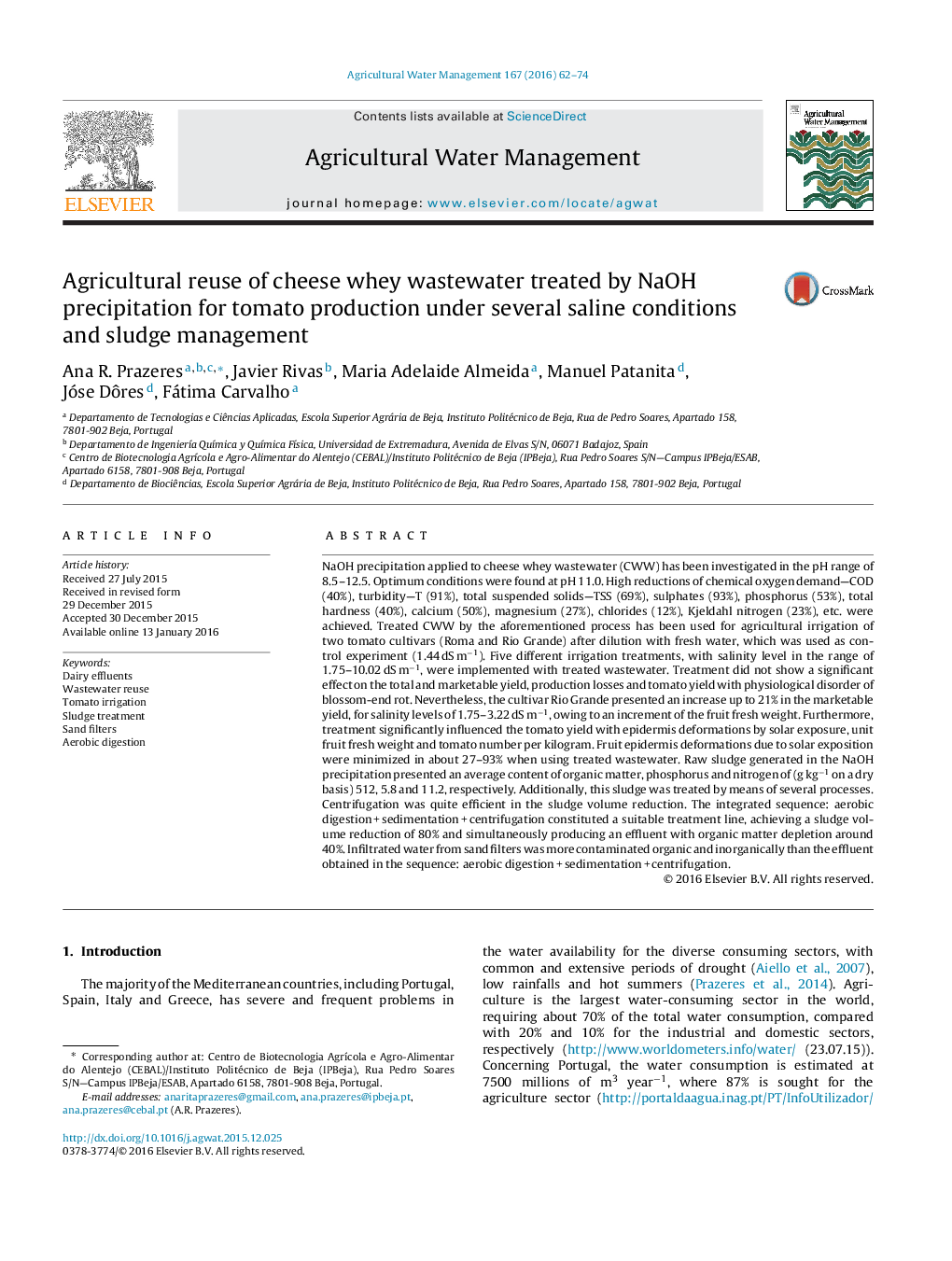| کد مقاله | کد نشریه | سال انتشار | مقاله انگلیسی | نسخه تمام متن |
|---|---|---|---|---|
| 4478325 | 1622913 | 2016 | 13 صفحه PDF | دانلود رایگان |

• Contamination of raw cheese whey wastewater was reduced by NaOH precipitation.
• Five different treated wastewater treatments were used for tomato production.
• Marketable yield, production losses and yield with blossom-end rot were not affected.
• Epidermis deformations due to solar exposure were minimized using treated wastewater.
• Sludge obtained in the NaOH precipitation can be used as a fertilizer in agriculture.
NaOH precipitation applied to cheese whey wastewater (CWW) has been investigated in the pH range of 8.5–12.5. Optimum conditions were found at pH 11.0. High reductions of chemical oxygen demand—COD (40%), turbidity—T (91%), total suspended solids—TSS (69%), sulphates (93%), phosphorus (53%), total hardness (40%), calcium (50%), magnesium (27%), chlorides (12%), Kjeldahl nitrogen (23%), etc. were achieved. Treated CWW by the aforementioned process has been used for agricultural irrigation of two tomato cultivars (Roma and Rio Grande) after dilution with fresh water, which was used as control experiment (1.44 dS m−1). Five different irrigation treatments, with salinity level in the range of 1.75–10.02 dS m−1, were implemented with treated wastewater. Treatment did not show a significant effect on the total and marketable yield, production losses and tomato yield with physiological disorder of blossom-end rot. Nevertheless, the cultivar Rio Grande presented an increase up to 21% in the marketable yield, for salinity levels of 1.75–3.22 dS m−1, owing to an increment of the fruit fresh weight. Furthermore, treatment significantly influenced the tomato yield with epidermis deformations by solar exposure, unit fruit fresh weight and tomato number per kilogram. Fruit epidermis deformations due to solar exposition were minimized in about 27–93% when using treated wastewater. Raw sludge generated in the NaOH precipitation presented an average content of organic matter, phosphorus and nitrogen of (g kg−1 on a dry basis) 512, 5.8 and 11.2, respectively. Additionally, this sludge was treated by means of several processes. Centrifugation was quite efficient in the sludge volume reduction. The integrated sequence: aerobic digestion + sedimentation + centrifugation constituted a suitable treatment line, achieving a sludge volume reduction of 80% and simultaneously producing an effluent with organic matter depletion around 40%. Infiltrated water from sand filters was more contaminated organic and inorganically than the effluent obtained in the sequence: aerobic digestion + sedimentation + centrifugation.
Journal: Agricultural Water Management - Volume 167, 31 March 2016, Pages 62–74